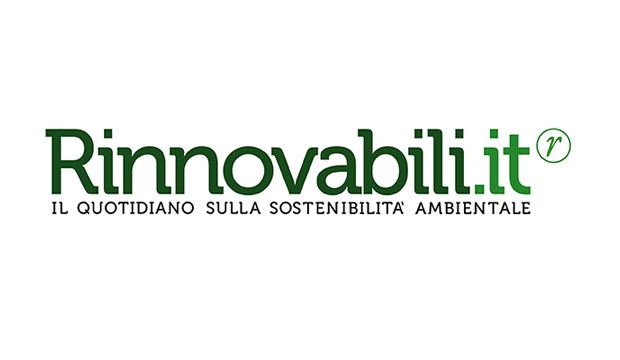A town in Germany is already into the future: electric urban buses are charged by induction

(Rinnovabili.it) – Wireless charging of electric vehicles has finally become reality. The first system is now operative in the German town of Braunschweig, where it powers urban buses.
Electric urban transportation offers huge environmental benefits and its slow but relentless diffusion may prove to be the factor that stops the quality of life deterioration that is afflicting our cities. One of the problems hampering its spread is the need for overhead lines, unsightly structures that are banned in some city centres.
To address this problem Bombardier, an international manufacturer of locomotives and aeroplanes, has developed PRIMOVE, a system enabling fast battery charging by magnetic induction, i.e. without connection to the grid. Recharge stations consist of plates, buried under the road surface, that recharge small onboard batteries in a few seconds, while the bus is standing at the stop. The charge provides limited autonomy, i.e. only enough to reach the next charging station (the next bus stop). The system is neither science fiction nor a prototype: it is already operating on line M19 buses in Braunschweig, Lower Saxony. We have been following this interesting project since its presentation in Augsburg in June 2012, where its adoption in Braunschweig was announced and where we went to see it.
We interviewed the CEO of Bombardier Italia, Mr Luigi Corradi, to ask some questions on the potential and prospects of the new technology.
Mauro Spagnolo: Bombardier is a world leader in the rail industry and the aeronautical sector. How come it decided to explore the recharge of electric vehicles?

MS: So it was actually the market that prompted the idea.
LC: Exactly. We asked ourselves: can we design an urban train that does not require an overhead line? We found that it was possible. The PRIMOVE technology is based on power transmission by induction and has a wide range of applications not only to trains, which are closest to our core business, but also to buses, trucks, and even minivans and cars.
MS: What are its prospects in the world and particularly in Italy?
LC: We’re focusing on Europe and on existing projects like the one in Braunschweig, but we’re also assessing interesting options in France and Italy. Italy has a huge potential market for our technology, since thousands of diesel buses could be replaced with green vehicles.
MS: What are the environmental advantages of the PRIMOVE system?
LC: Quite a few. The most obvious is that it moves pollution away from cities. The second is lower consumption given the same route and number of passengers transported. The third benefit is clearly in terms of noise: recent studies demonstrate that a 12 metre electric bus is 10 times less noisy that a conventional vehicle and has the same noise emission as a car running on fossil fuel.
MS: How much will the technology cost the taxpayer compared with conventional vehicles?
LC: Let me point out that PRIMOVE is a new technology. Its diffusion will reduce manufacturing costs. However, its greater cost will not affect the price of the ticket, since the shift to electric systems will be paid for from public investment on environment and sustainable transportation.
MS: Will the system move from charging pads to continuous charging along the whole route?
LC: This is a possible evolution, but at present batteries are still required to minimise the impact and cost of infrastructure. Clearly, installation in a new town—planned for at the design board stage—would lead to developing new plant models. The current system is technically compatible with continuous charging, but if one considers European cities the most rational solutions are clearly along the lines of the model that we realized here in Braunschweig.
Translated by Silvia Modena














